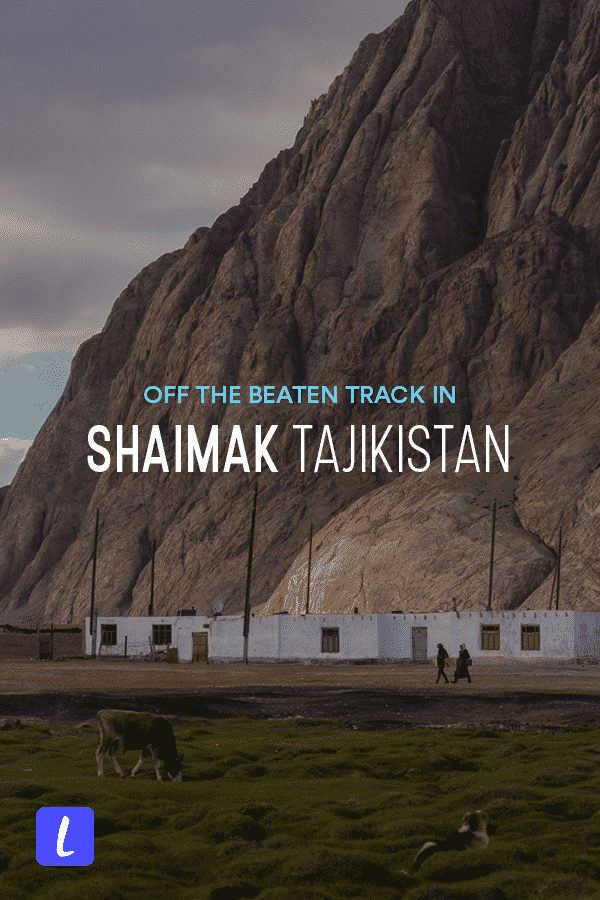While traveling Tajikistan, I wanted to go somewhere off the beaten track in the Pamir, away from the “crowds” of Mongol Rally-ers and cyclists. In Shaimak (Shaymak) I found exactly what I was looking for. Head to the end of the post for a quick travel guide to Shaimak with everything you need to plan your trip.
Creaking and groaning, the ancient baby blue jeep crashes through the night on a not-road to nowhere. Rain beats against the windshield, illuminated by headlights as the young driver throws his weight against the wheel to navigate over crunching stones and crackling dirt.
My head spins from the altitude: 3,780 meters (12,400 feet) above sea level according to my phone. A sip of water might help, but my arms are pinned by the sheer number of people in the jeep: seven adults and five children across two rows meant to seat five humans. Sleeping toddler heads bounce on my shoulder every time we hit a bump. My arms are liberated only when the mother next to me leans forward to breastfeed her son.
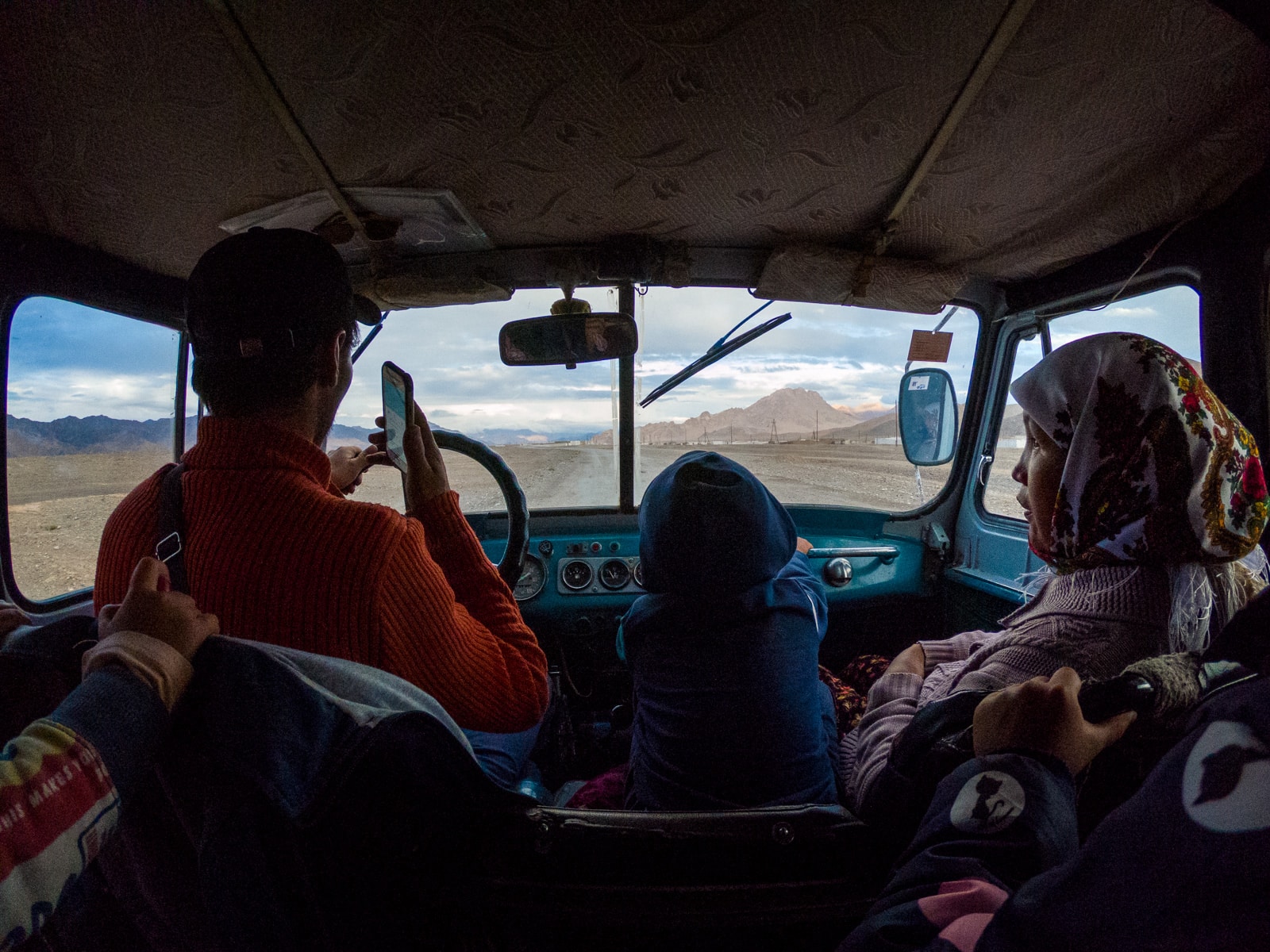
Every once in a while, a desolate village appears like a specter in the night. Lonely bulbs illuminate a few of the houses, their light drawing us to them like moths. Some passengers get out to relay greetings, others loiter in the warmth of the car.
At each stop, food magically appears. At one house, an old woman passes a large plate of gloopy mutton rice around; everyone in the jeep take turns taking bites with a shared spoon. At another stop a round of stale bread topped with a mound of butter is handed through the door; we each tear off a small chunk to dip into the butter.
The darkness is empty and dull, the jeep cramped and sweltering. Just when my body begins to scream that it can’t take it anymore, the jeep comes to a final growling halt. We all tumble out into the freezing night and our final destination: Shaimak village.
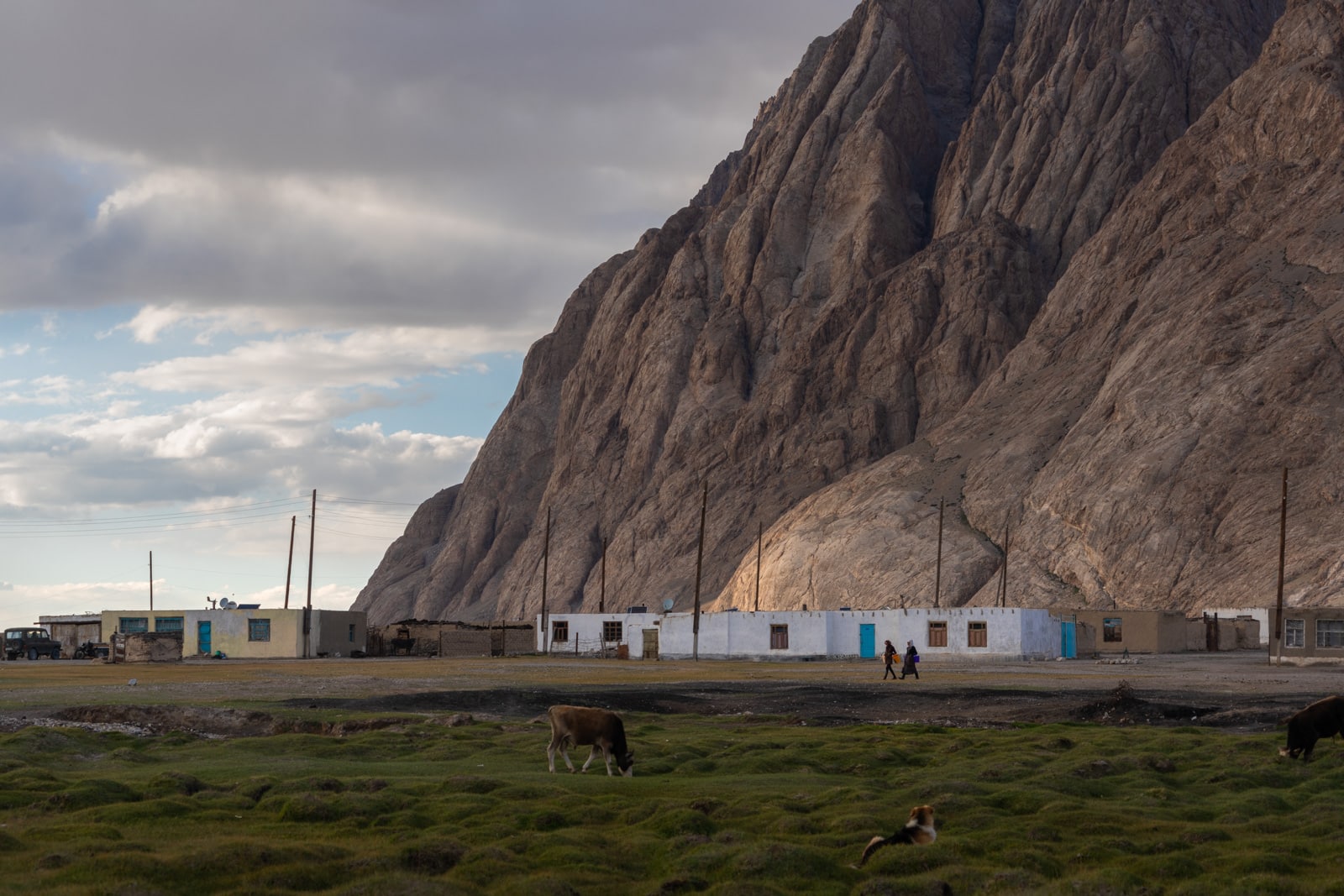
Evening strolls in Shaimak
Welcome to… the middle of absolutely nowhere
I’ve written about places that seemed like the end of the world before, but I have to eat my words—if there’s a place that feels like the end of the world, it’s Shaimak. There are times where I truly do not understand how or why people survive in the places they do; Shaimak is a shining example.
Set on a high altitude plain 3,600 meters above sea level among jagged Pamir mountains, the tiny village is close to nothing in particular… except for China and Afghanistan, that is. It essentially sits at the convergence point of Tajikistan, China, and Afghanistan’s Wakhan Corridor.

That way to Afghanistan!
Entering any of the neighboring countries requires crossing a massive snowy mountain range—and likely upsetting the Chinese military, who have a border post several kilometers further into the Ak Suu valley—but the sentiment is there. It’s not every day you can look out onto the mountains of three countries at once, just sayin’.
But there’s more to Shaimak than its spot on the edge. Unlike the parched landscapes along the Pamir Highway, especially around Murghab, Shaimak is green. Water ain’t scarce there: the Bartang River flows along the valley and countless springs, both hot and cold, trickle down mountainsides around the village.
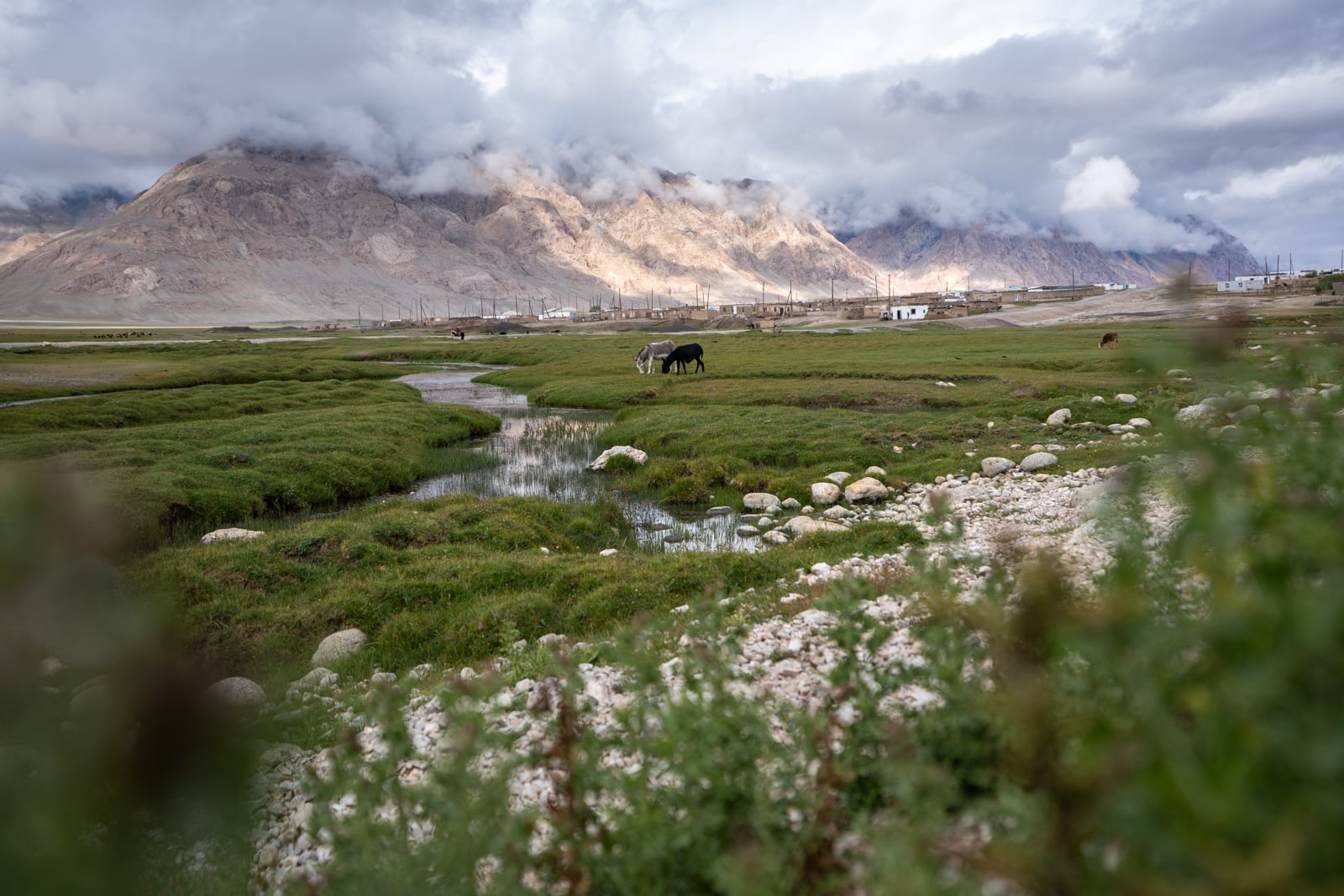
Not pictured: swarms of hungry mosquitoes
The area isn’t forested by any means—I believe there are two imported “trees” in all of Shaimak—but plush green hillocks and grass-lined waterways surround the village. When I visited in late August, tiny wildflowers of all sorts sprouted among the grass, and fields of vivid red chekende berries blanketed stonier vistas.
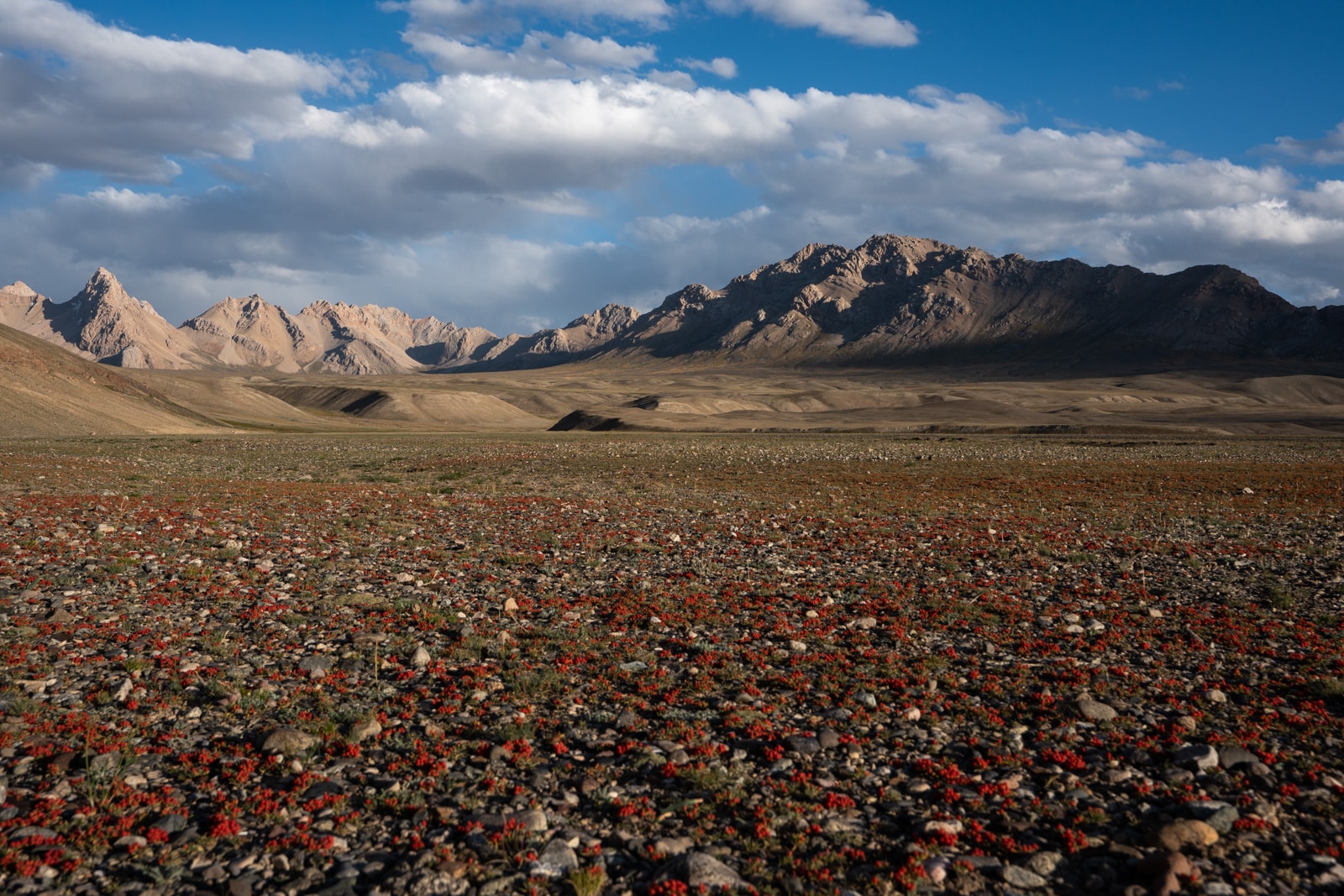
Edible chekende berries as far as the eye can see. Slightly tart and somewhat like goji berries (to me), they’re not bad—especially when they’re the only fruit available for miles.
Life on the edge: the challenges of living in Shaimak
Of course, a little green and a splash of water doesn’t mean life is easy for Shaimak’s residents.
“My daughter is coming,” my homestay host told me excitedly one morning. “She is coming from Osh and bringing cabbage!” Her eyes genuinely sparkled; never have I seen someone speak so dreamily of cabbage.
But in Shaimak, cabbage—or any kind of vegetable matter—is a luxury. Most locals rely on livestock for food; milk products and some kind of starch make up almost every meal, while mutton meat supplements meals in colder months. Fruit and vegetables are an expensive treat, as all produce must be brought in from Murghab (4 hours away), Khorog (12 hours), or Osh, Kyrgyzstan (12+ hours).
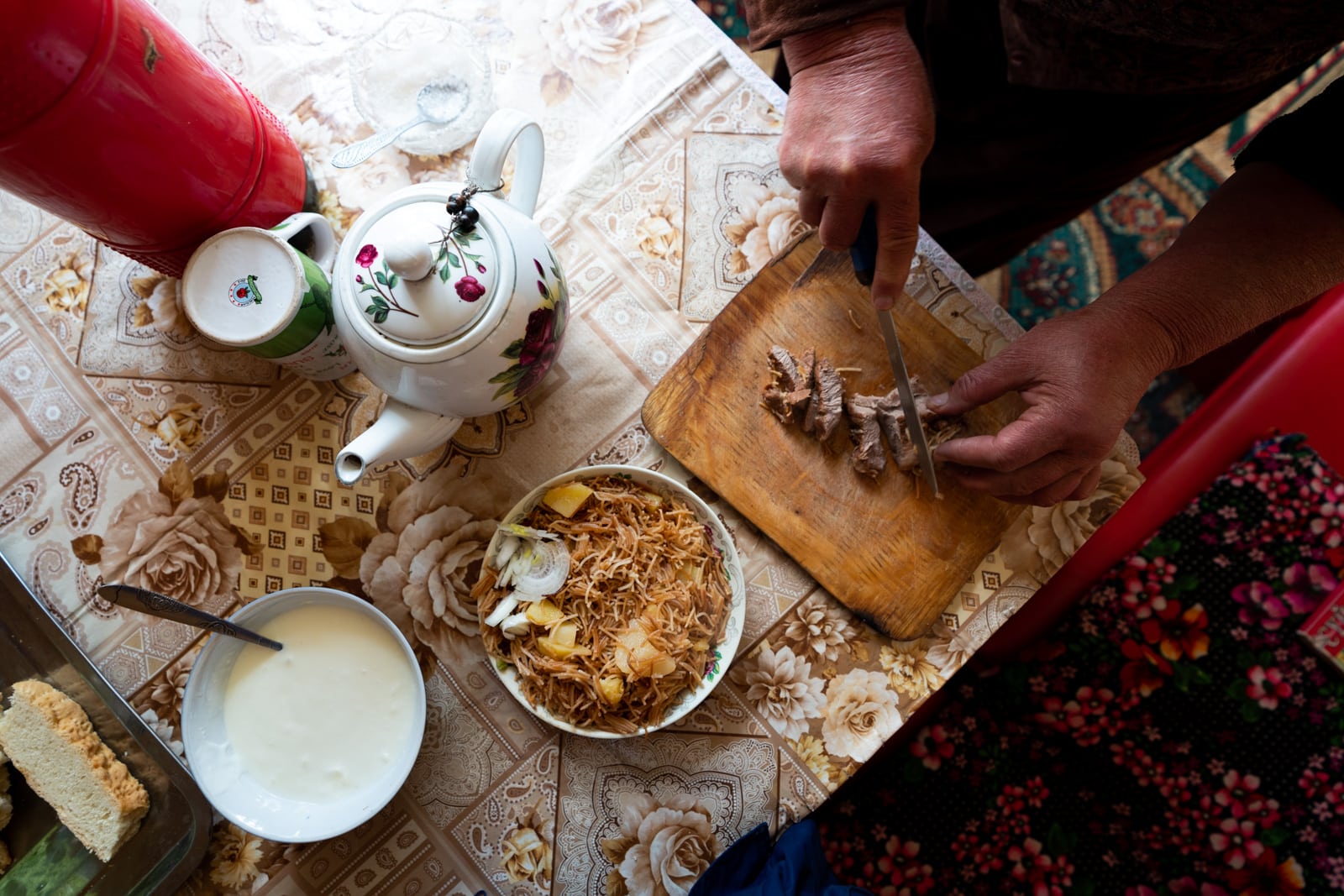
Lunchtime: rice with potatoes, sliced onions, homemade yogurt, and a bit of local mutton (because I’m a guest), always accompanied by mugs of hot tea.
Electricity is limited, and many rely on solar panels. The nearest hospital is in Murghab—as I soon learned firsthand—and there’s only one school in the village. Like in other parts of Tajikistan, many of the village men leave to work elsewhere, often as far away as Russia.
Perhaps the most remarkable struggle is one we privileged warm weather tourists won’t encounter: the challenge of heating in winter when temperatures can go down to -40°C or lower.
Given Shaimak’s remote location and impoverished residents, coal is prohibitively expensive. Electricity is too limited to power a village’s worth of electric heaters. And, of course, there are no trees to chop into firewood. So… what then?
The answer lies stacked in a piled plethora around the village: cow dung.
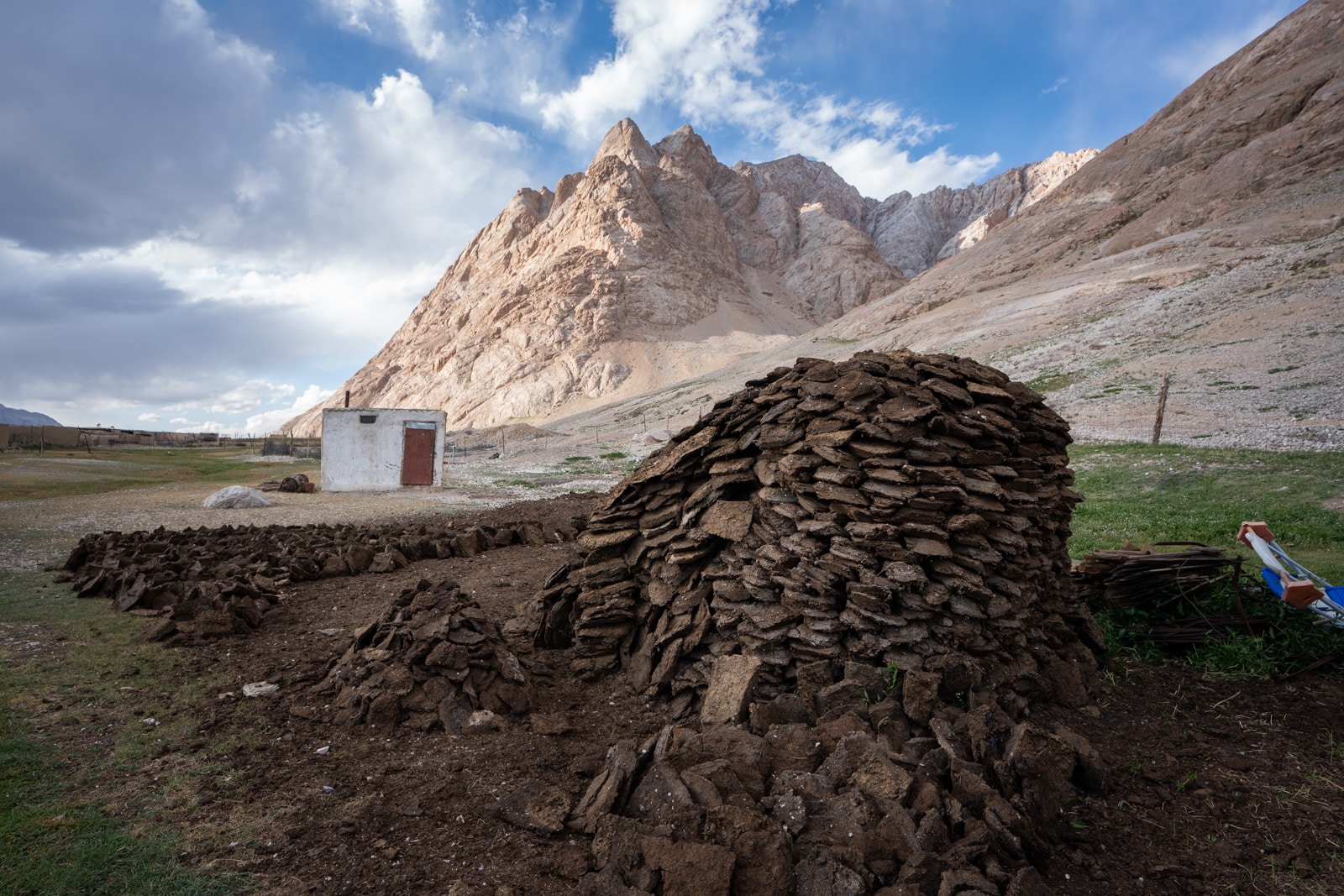
One of many fuel piles needed for a family to survive the cold winters.
People collect cow patties throughout the warmer months, forming them into bricks and stacking them to dry wherever possible. Fear not: smelly as they may seem, the smell all but disappears as they dry over time. In winter, they’re burned both for heat and for cooking fires. It’s a free solution to the heating conundrum, and an effective use of natural resources. What’s not to like?
A taste of the impossible
Shaimak may seem like an impossible place to live, but few things are truly impossible for a species as resilient as humans. The little Pamiri village isn’t every traveler’s cup of tea, but if you have the time—and stomach—for it, I think traveling to a Pamiri village like Shaimak is an eye-opening experience every adventurous traveler should have at least once in their lifetime.
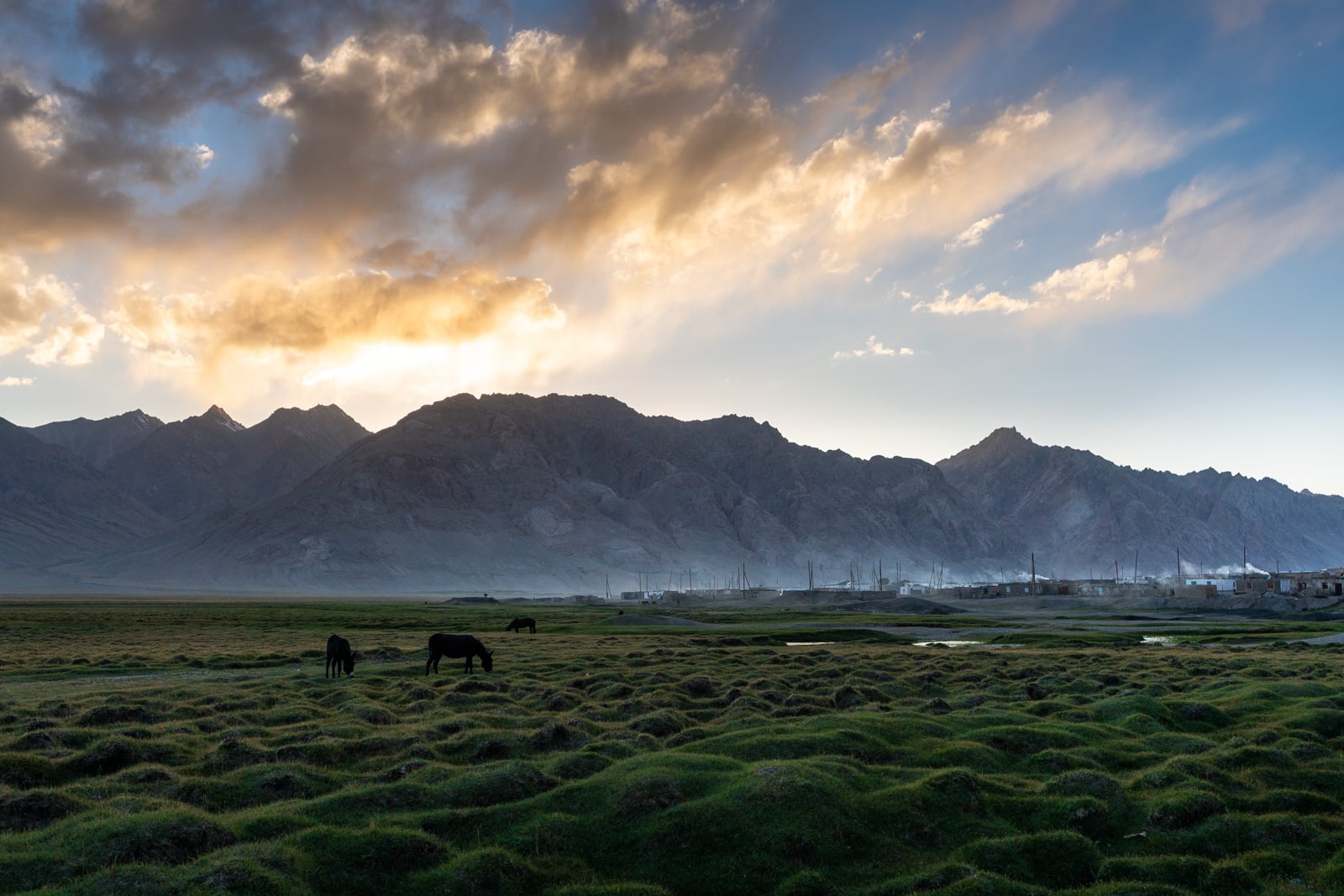
Life in Shaimak is tough for locals, but there’s no denying its stark beauty for outsiders like us.
Photos of Shaimak, Tajikistan
To further inspire you to head out to this remote corner of Tajikistan (or convince you otherwise, I suppose), here are some more photos of Shaimak. They’re too pretty not to share!
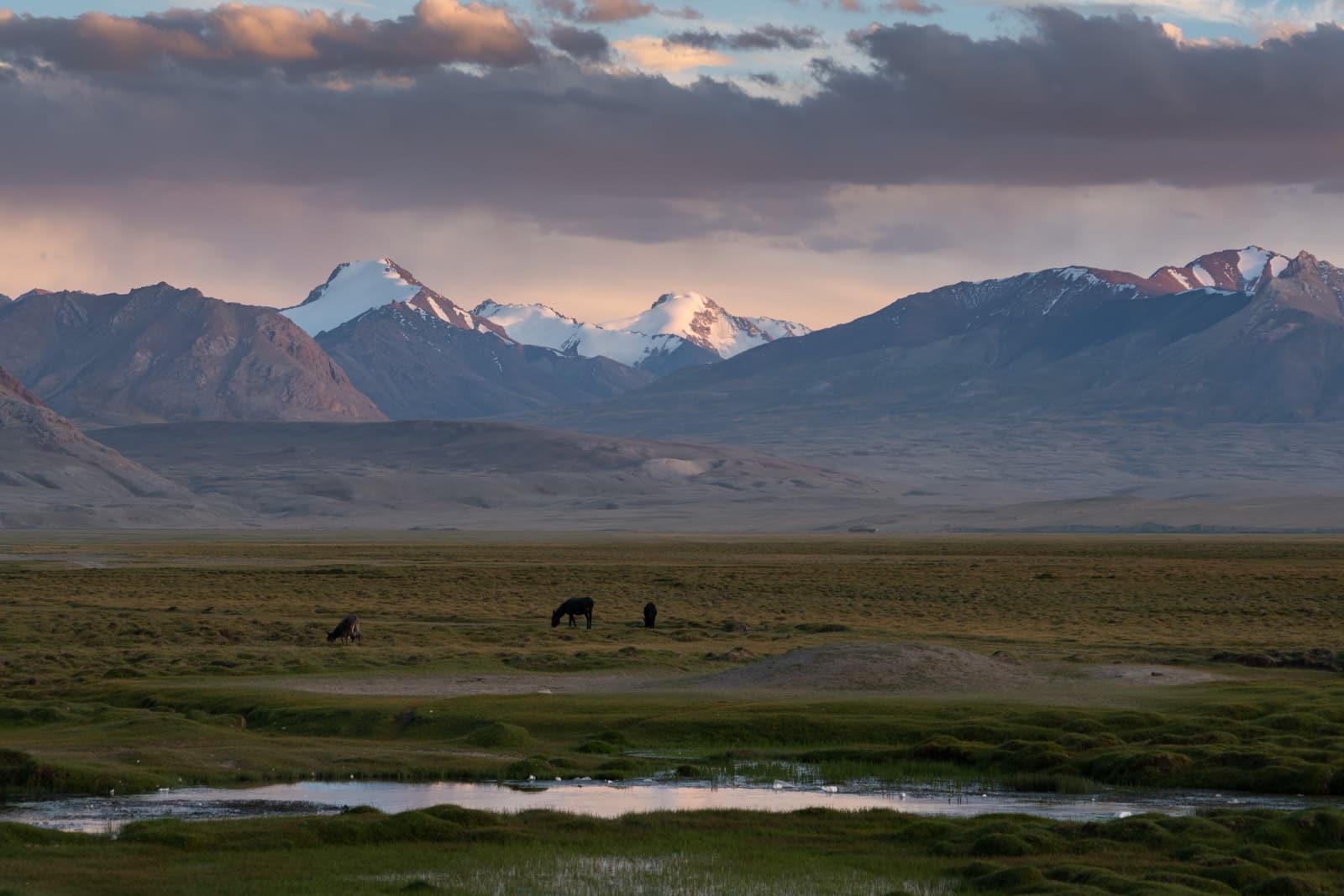
Wide open but ringed by mountains—Shaimak is the perfect place to catch an epic sunset.

A man walking to the village mosque for evening prayers.
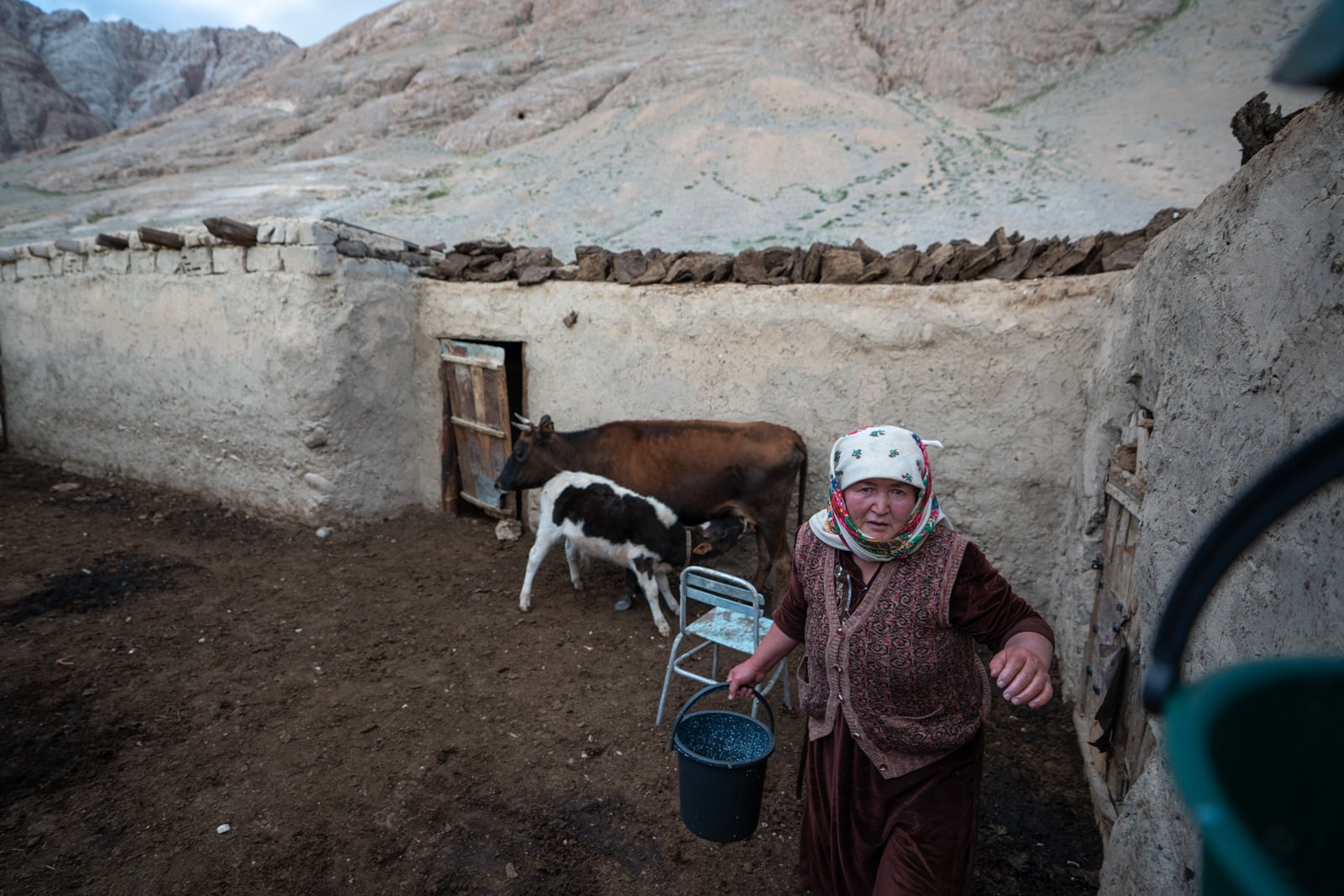
Appa milked the family cows twice a day: early in the morning and right before sunset.
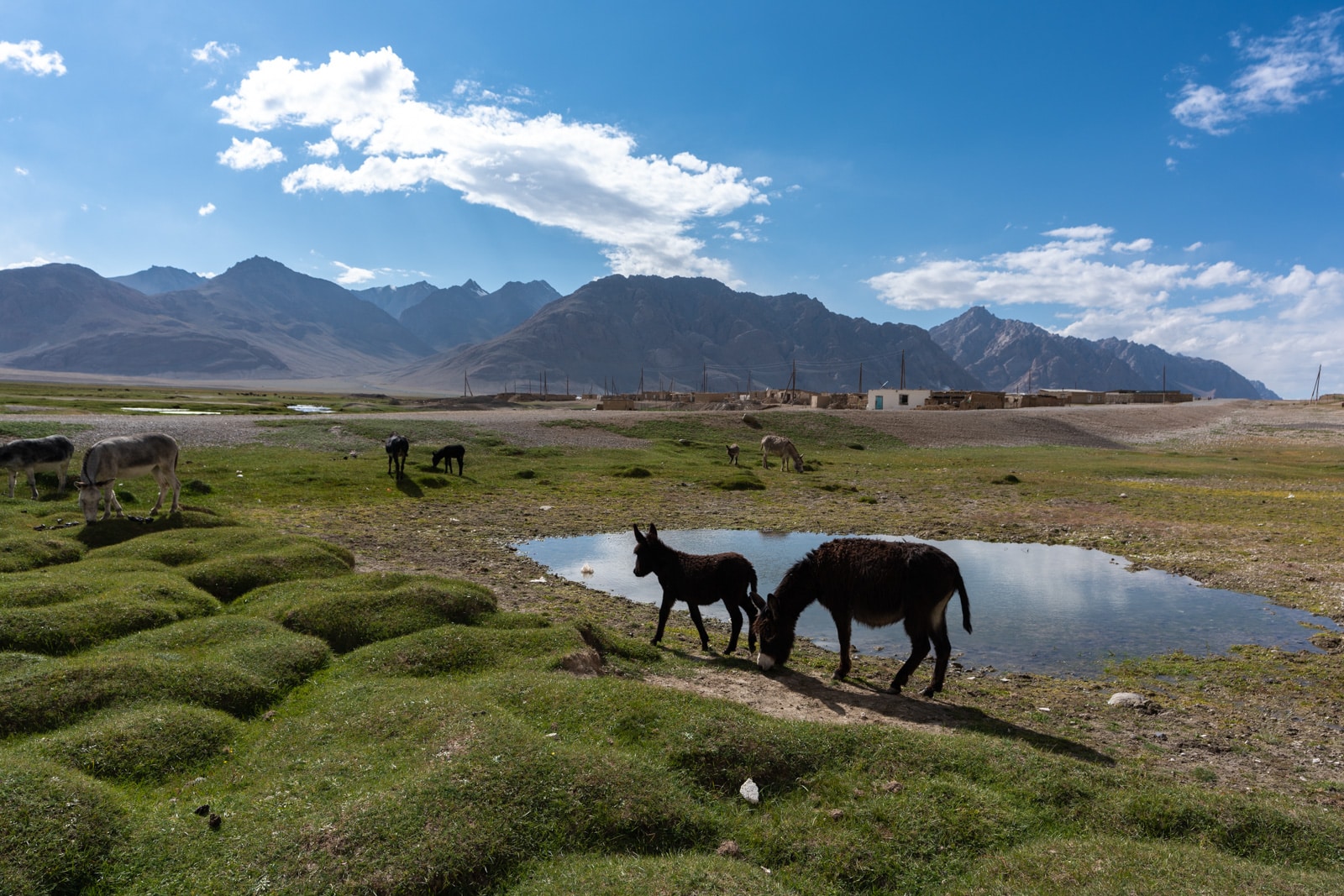
The bubbly green lands around Shaimak were always filled with grazing animals, sheep dogs, and the occasional cackling boy from the village (once school was finished, that is).
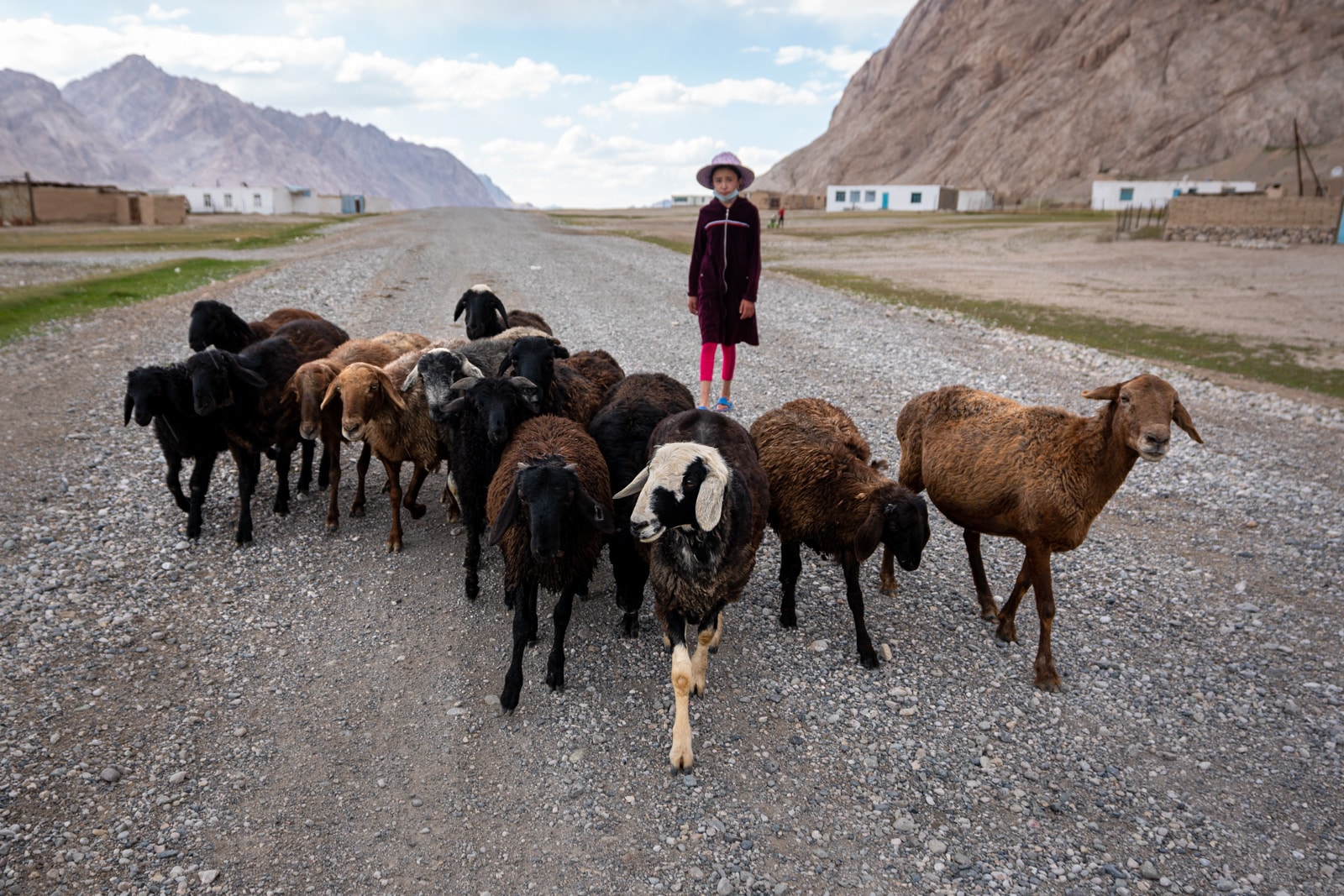
Helping (and photographing) Nilu herd the sheep into their enclosure for the night

Learning how to make different shapes of manty (dumplings) with mutton intestines and cabbage.
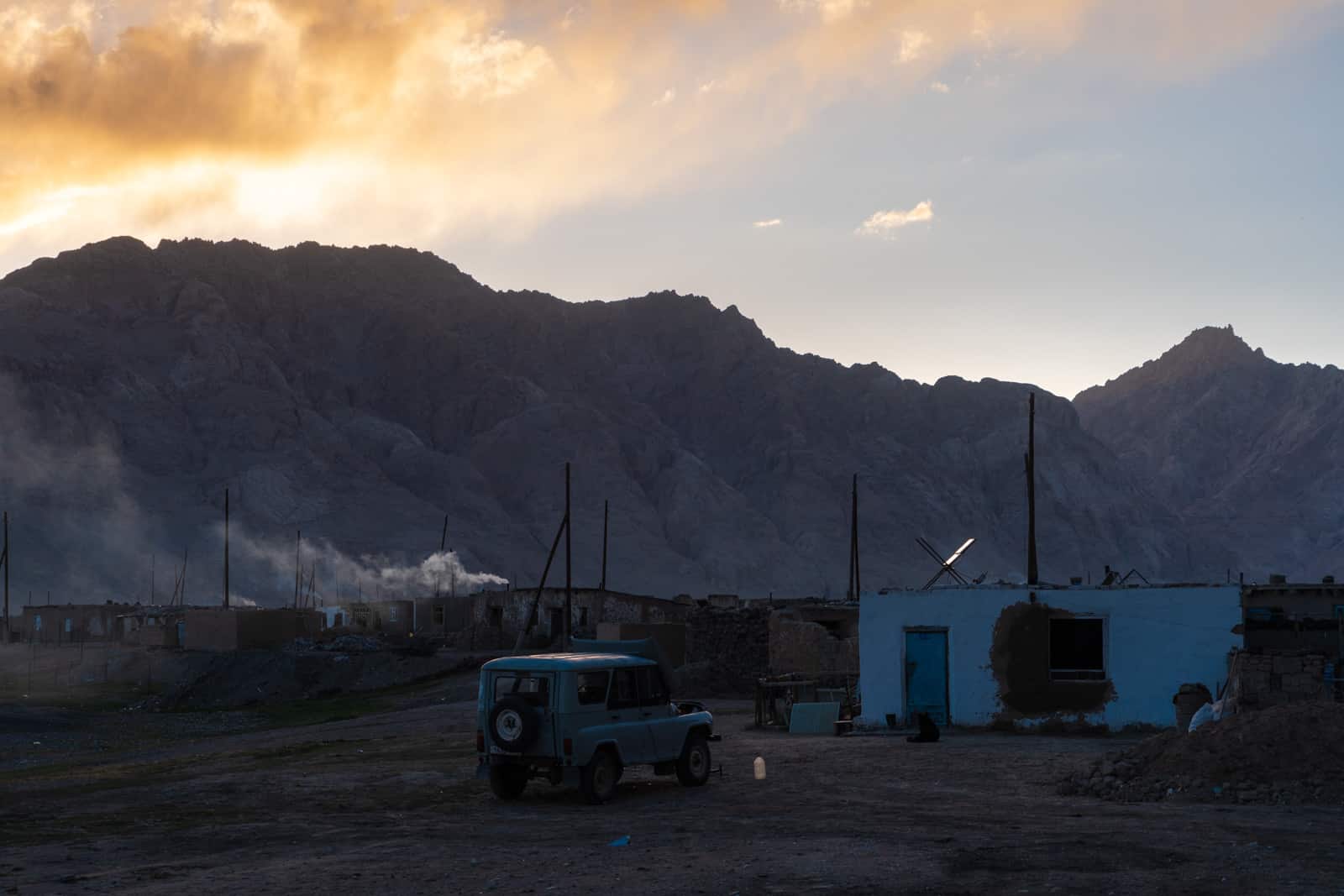
People roamed in the evenings, but the village always quieted around sunset once everyone brought their animals in from the fields.
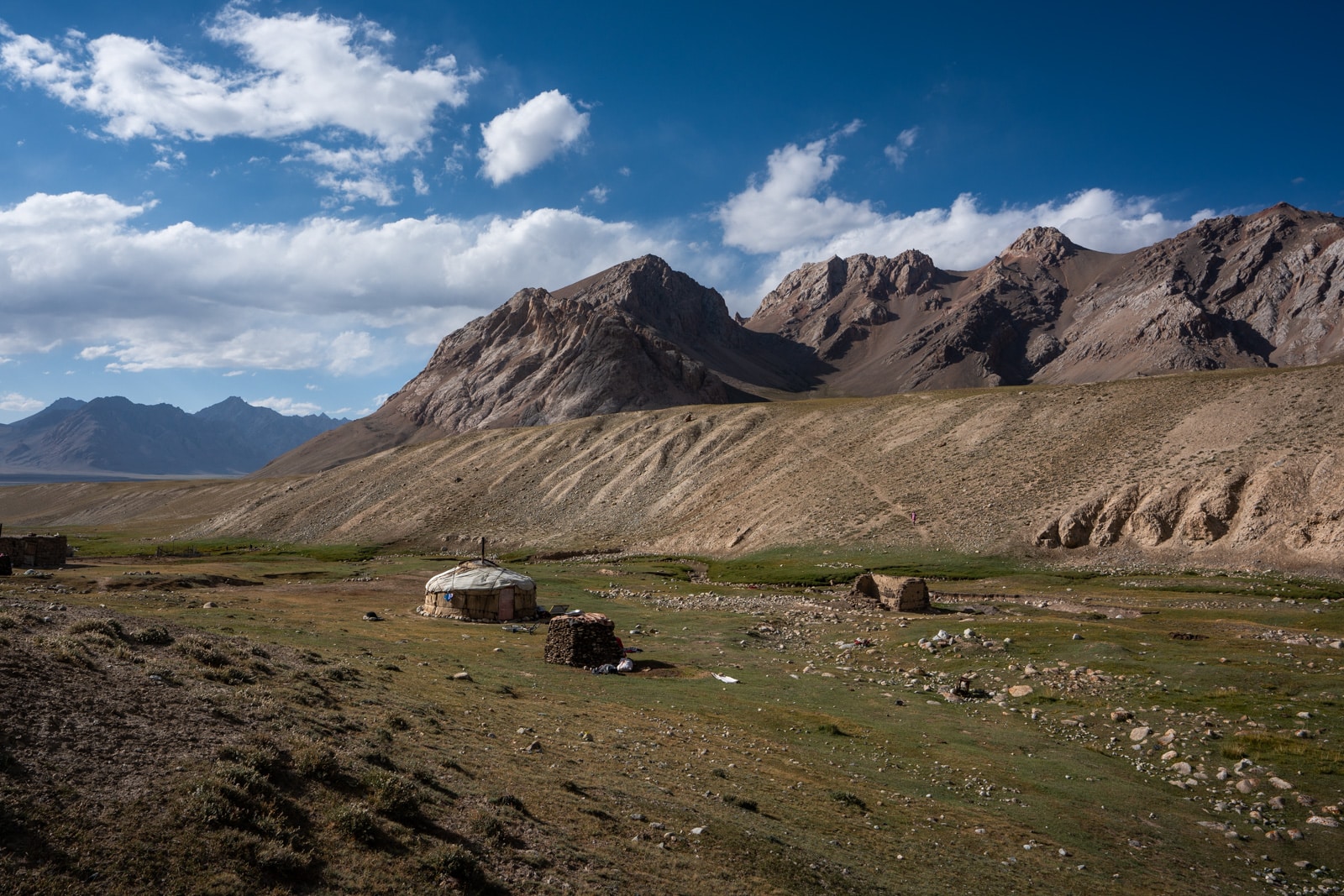
Nomadic Kyrgyz families set up their yurts in these grassy pastures in warmer months to allow their animals to graze. They migrate to homes in cities once winter comes.
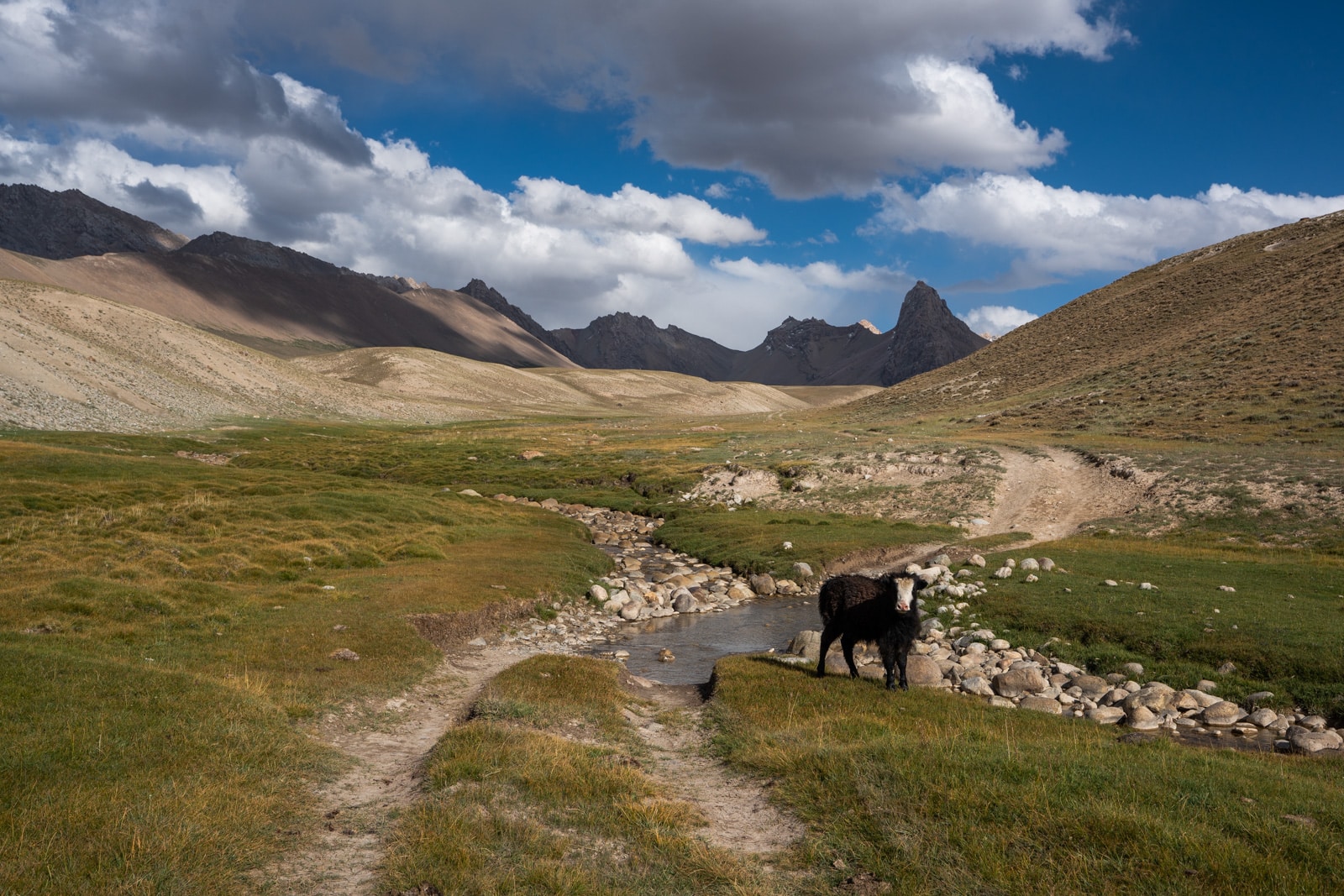
Making friends (… or scaring) a baby yak grazing in a jailoo near the yurt.
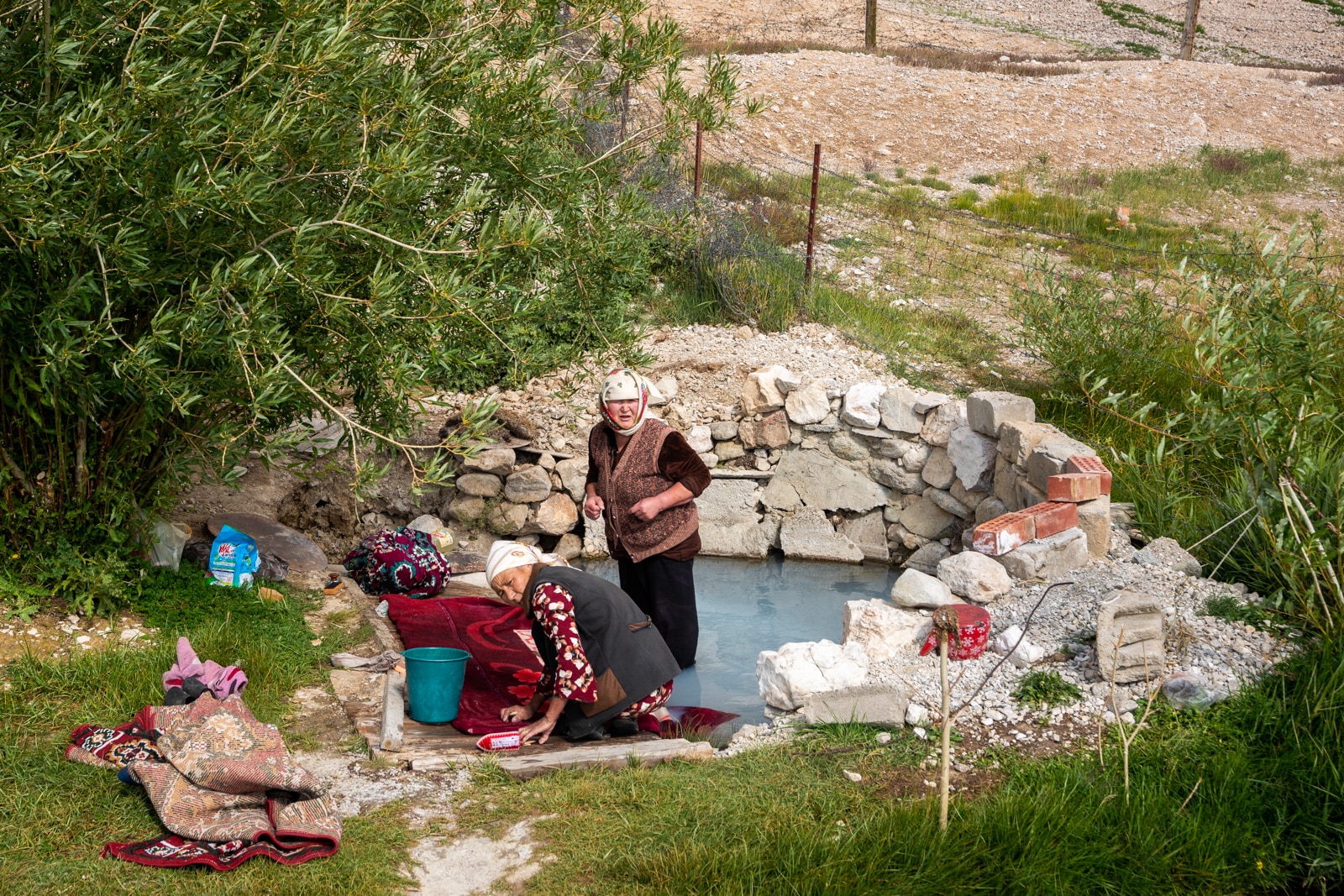
Appa and a neighbor washing sheets in a pond near the house (… where they also grew fish to eat.)

A still sunrise over Shaimak
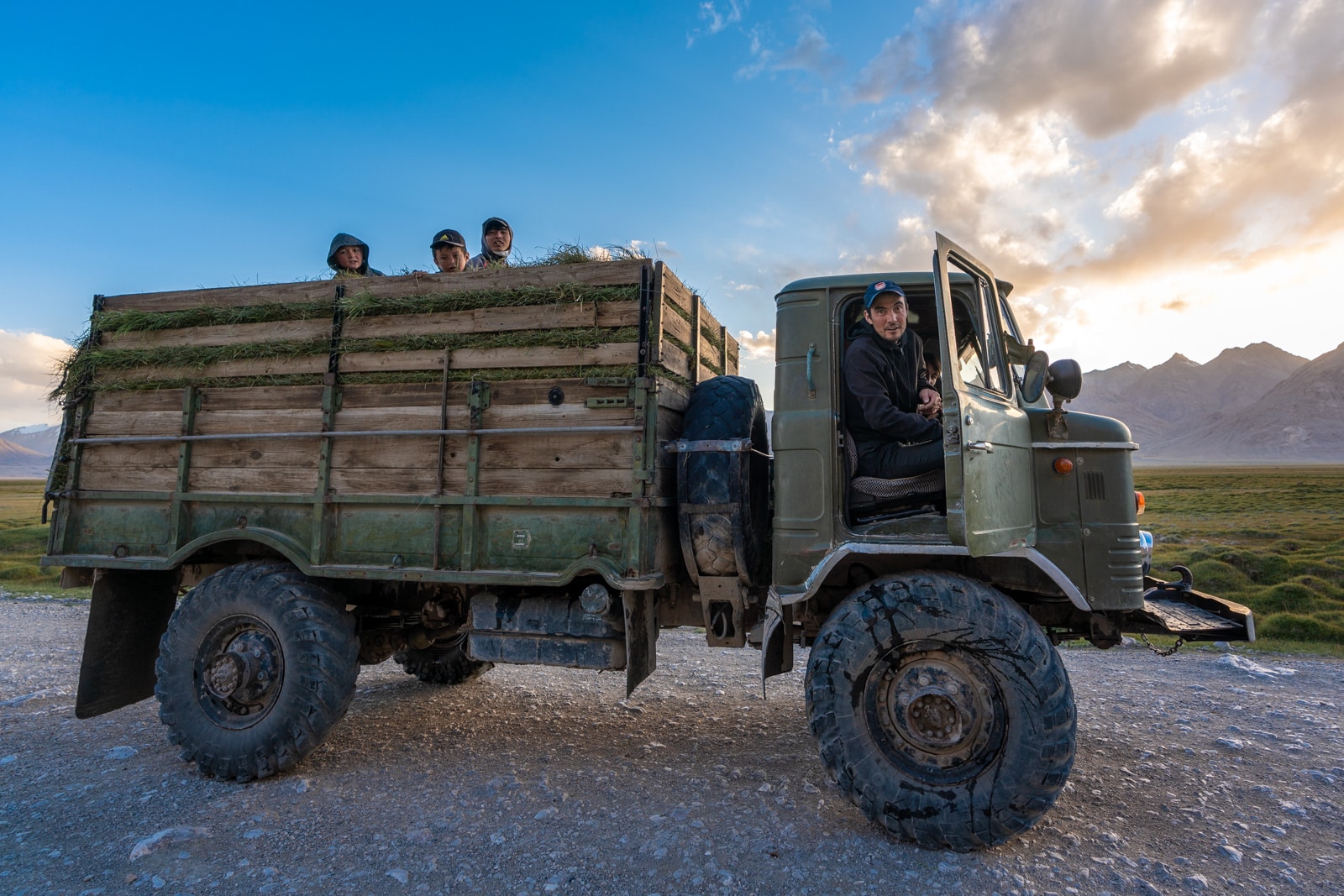
“Do you need a ride?”
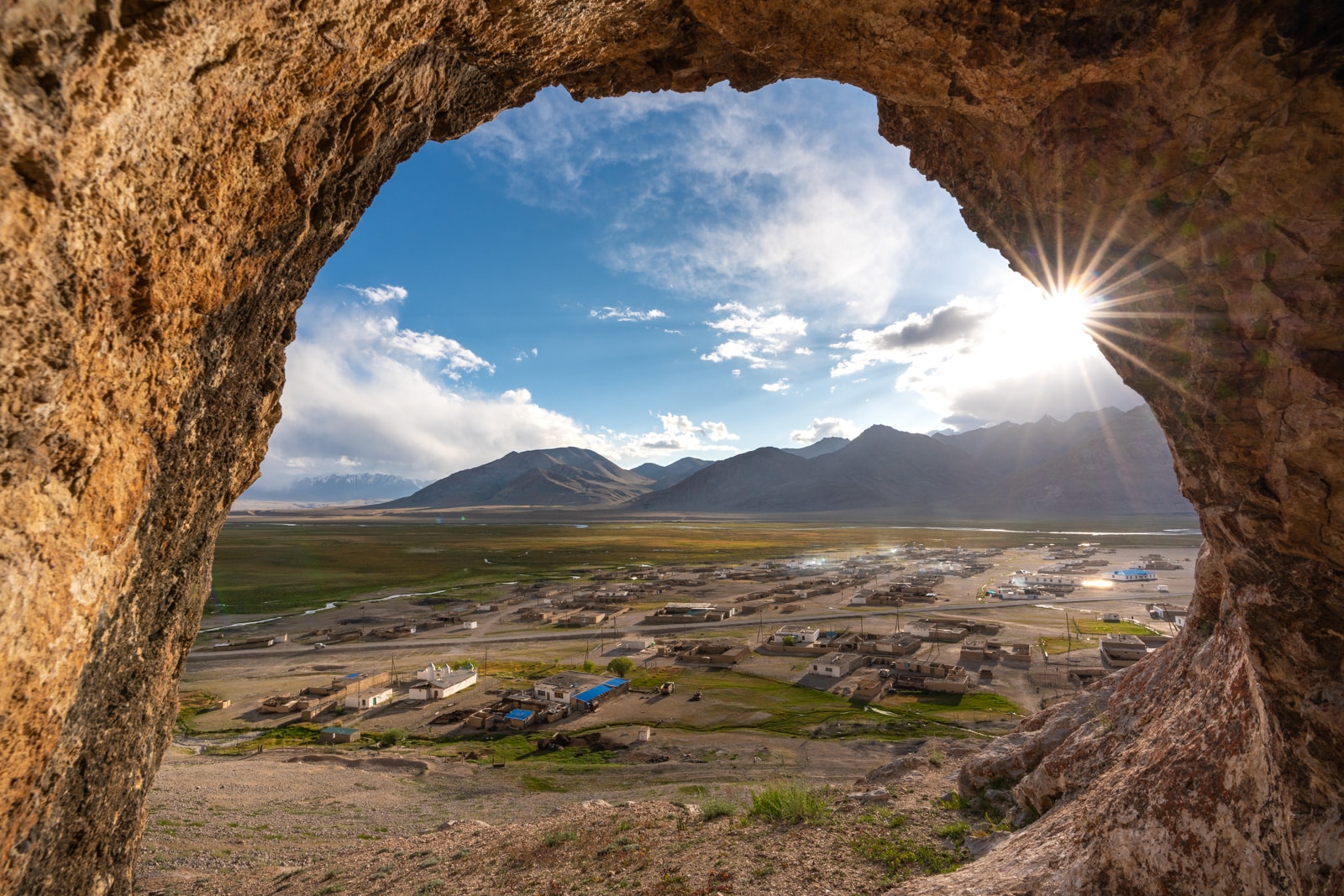
Last rays of the day from a small cave in the mountain above the homestay.
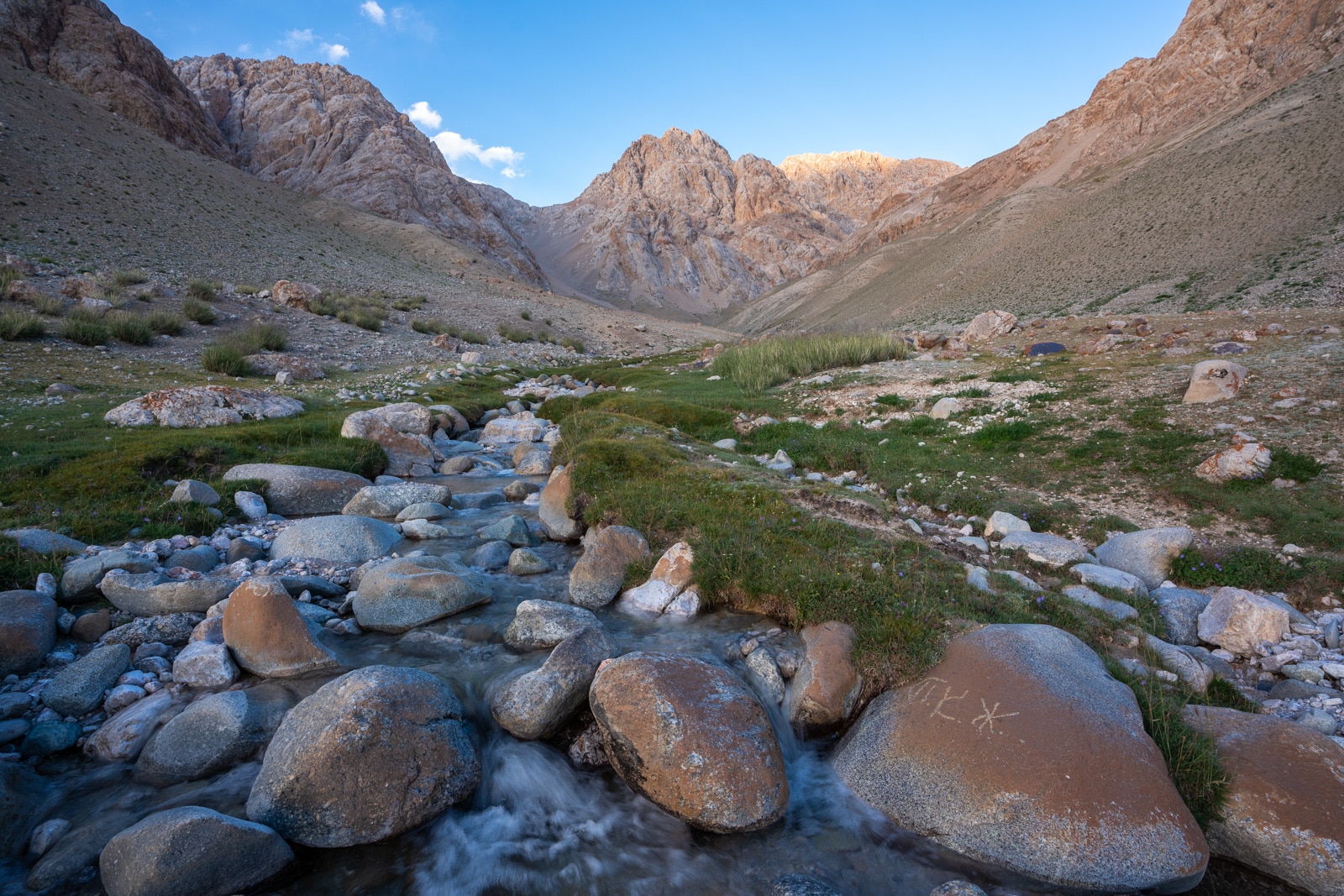
One of many mountain streams and springs flowing around Shaimak
Practical travel guide to Shaimak, Tajikistan
- Best time to visit Shaimak
- How to get to Shaimak
- Where to stay in Shaimak
- Things to do in Shaimak
- Travel tips for Shaimak
Best time to visit Shaimak
Summer is the best time of year to travel in the Pamir, and Shaimak is no exception.
- June to September are the warmest—and driest—months, as well as the high season for Tajikistan.
- October is cooler, but you’re more likely to see Marco Polo sheep near the village, as they come down to lower altitudes in colder months.
- December is when it starts to get really cold (by my hosts’ standards, that is) so try to time your visit before then unless you’re particularly masochistic.
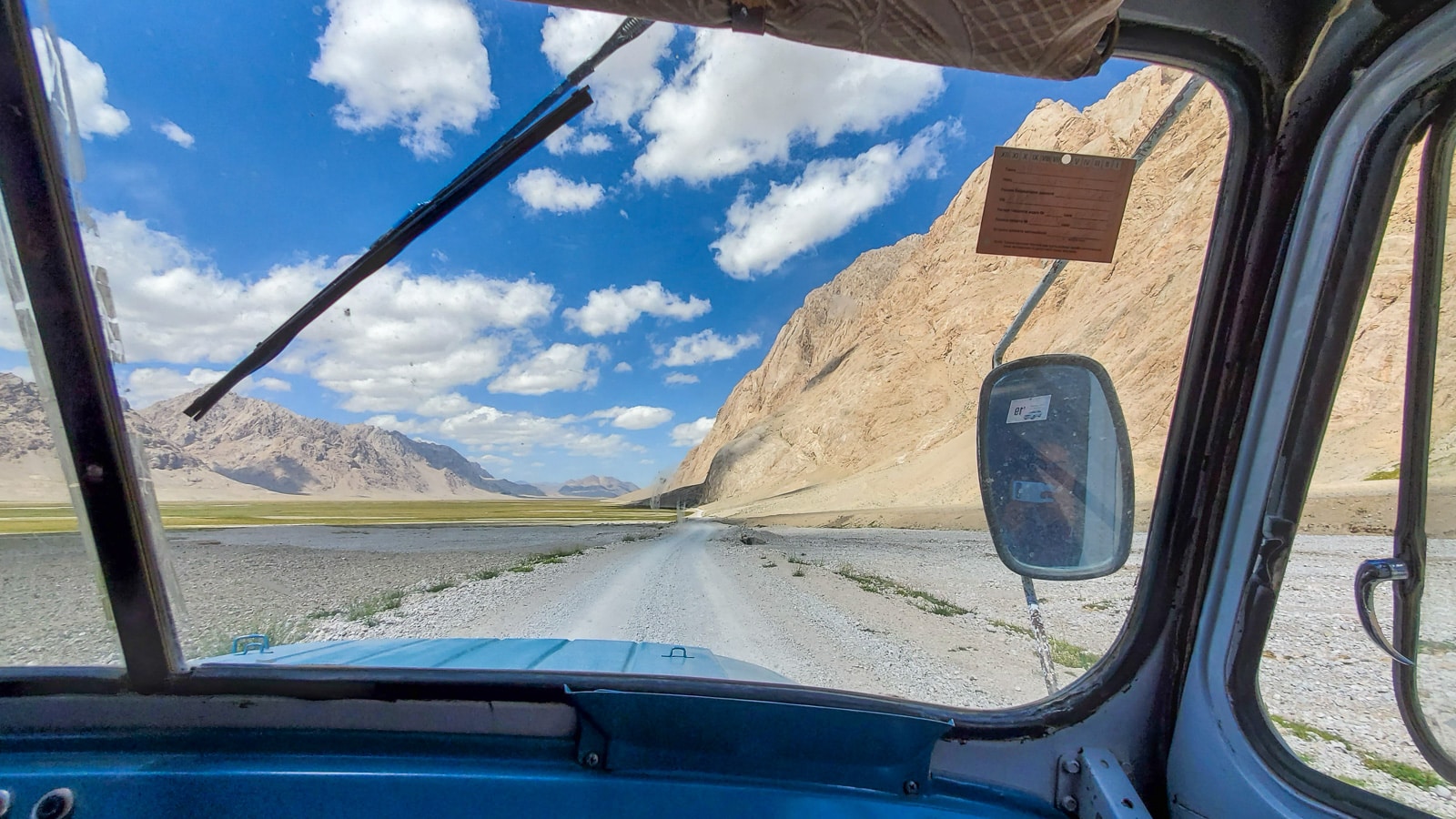
How to get to Shaimak
Shaimak is most easily visited from Murghab, though travelers coming from the Wakhan through Zorkul Nature Reserve will also pass by Shaimak.
When I visited from in 2019, I came via shared taxi from Murghab. I found the taxi by asking random drivers in the shipping container bazaar, and one was eventually kind enough to help me track down the (sole) driver to Shaimak. In case you’re having trouble finding him, try calling +992900551190 – the number of the jeep driver who drove the taxi when I went.
A seat in the shared taxi is 100-150 somoni, depending on how many people are riding that day. The jeep picked me up from my guesthouse in the evening around 17:00, and we left by 18:00 or so. The drive is about 4 hours of bumpy roads from Murghab. Random mutton rice stops included.
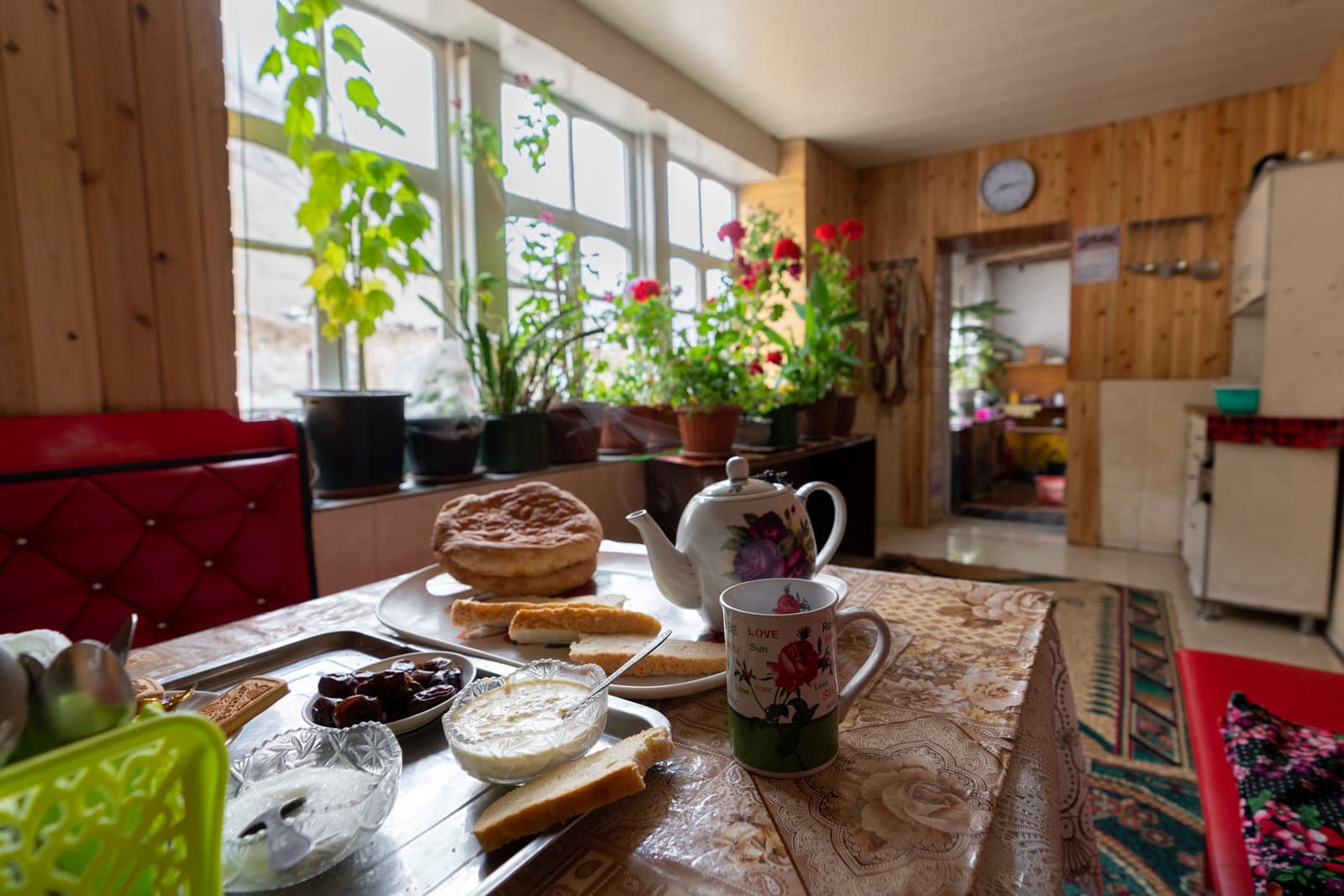
Where to stay in Shaimak village
There are a few homestays in Shaimak to choose from. Upon arrival, I ended up in Alifbek Akjolbekov’s homestay (phone: 90 540 1881) as the jeep driver knew exactly where it was… and they were the only family to answer the phone. Searching for the perfect homestay in pitch black night in freezing rain ain’t really my jam.
Alifbek was mostly away for work, but two of his sons were there. The elder was fine, the younger was a creep all too thrilled to have a solo female traveler hanging around. Luckily, Alifbek’s wife (I never got her name, I just called her “Appa”) was caring if a bit of a hustler at times, and his granddaughter Nilufar was a delight. Only Nilu spoke English; I had to speak in Russian with everyone else.
Their home was warm, comfortable, and featured Shaimak’s only trees, as my hosts were proud to point out. My stay cost $21 per night including breakfast, dinner, and lunch if I was around… plus enough homemade yogurt, kaimak cream, and breaded snacks to kill an army. There was electricity for some of the day, and the toilet was a drop toilet outside the house (like many places in Tajikistan). I could wash my face with warm spring water at the mosque nearby.
I slept on a floor mattress in a spare room in their house, though they also have a totally separate guest building for warmer months or bigger groups. Not that bigger groups are common—they told me I was the 5th foreign guest that year, despite it being September and the end of the summer high season.
Request: If you visit, please tell them American Sasha sends her regards and will return one day with a coat for Nilu. Appa literally saved my life (after killing me with mutton), but I have no way of contacting her to thank her. I’ll visit again when I can.
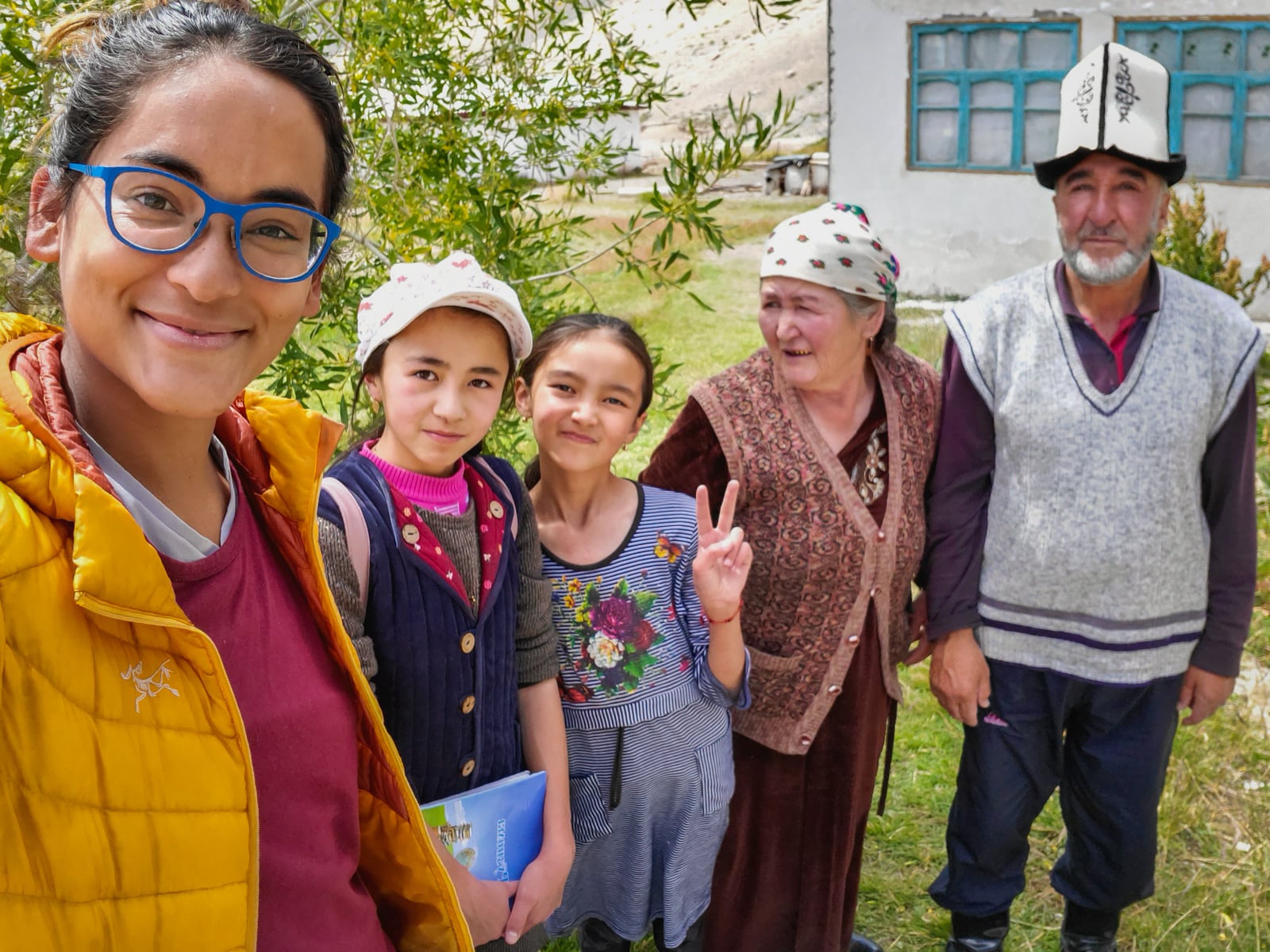
For more information on homestays in Shaimak you can either contact the PECTA office by email, or visit in-person in Khorog to get a full rundown of options and information. I recommend stopping by in Khorog if you can; the people working there are happy to help and extremely knowledgeable about the area. The boy I spoke to was the one who recommended Shaimak to me!
Things to do in Shaimak (besides survive)
Like many places in Tajikistan, Shaimak’s draw is its surroundings, rather than an expansive list of things to do. But don’t let that deceive you; there’s more to the surrounding mountains than meets the eye.
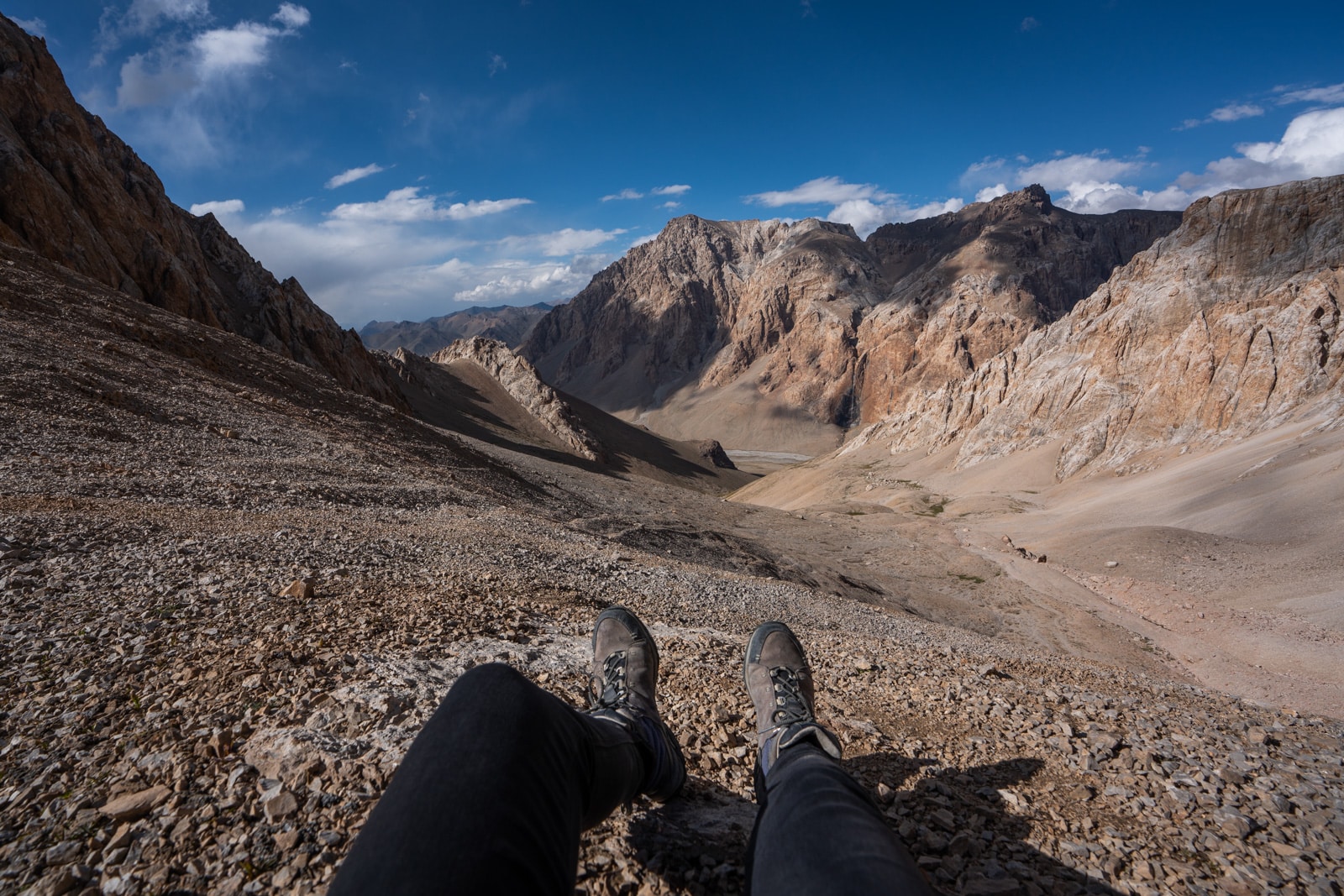
Casual 4,000m+ afternoon strolls because I’m too curious to turn back before knowing what’s on the other side of the pass.
Trekking is the most obvious opportunity in Shaimak. Though I wasn’t aware of any specific hiking trails—unless you count the dirt road running through the valley—I went out hiking daily in Shaimak. Given how open the area is, it’s hard to get too lost on a day hike. Avoiding the Chinese military post, I’d simply pick a direction and walk for hours until I was tired. Walking south of the village brings you to rolling pastures (known as jailoos in Kyrgyz), where I ran into some not-particularly-sociable nomadic families’ yurts and herds.
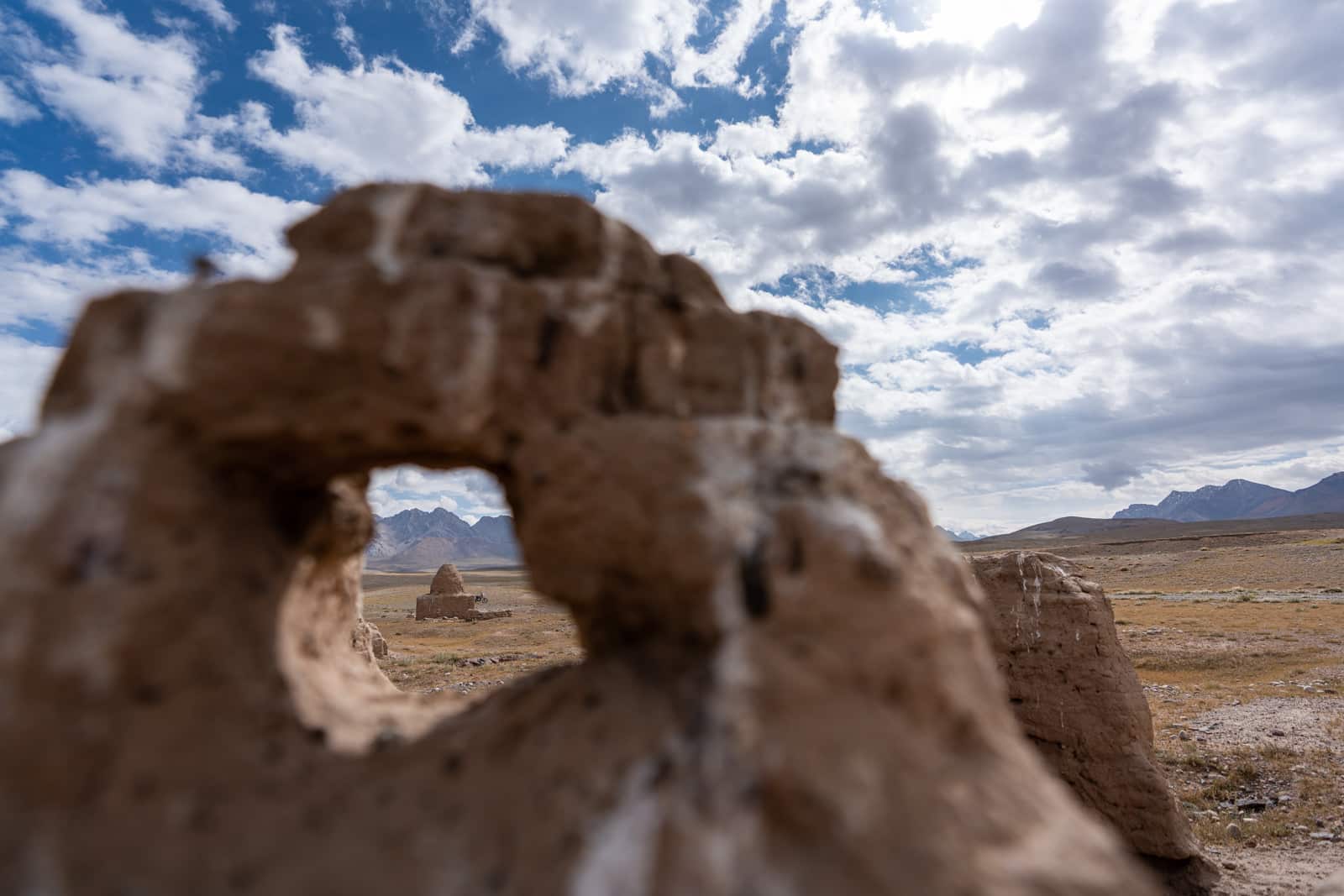
Saka tombs (kurgans)
A necropolis of beehive-shaped Saka tombs and various burial mounds lie to the southwest, on the river and close to the Chinese border post. One of my hosts took me to them on his motorbike, though you could walk the distance in an hour or two. We could only communicate in Russian, so I only understood part of his explanation—Tombs of really big Sakva people, Russian scientists did research here—then later learned the stone mounds were more than 2,000 years old! (Thank god for Google.)
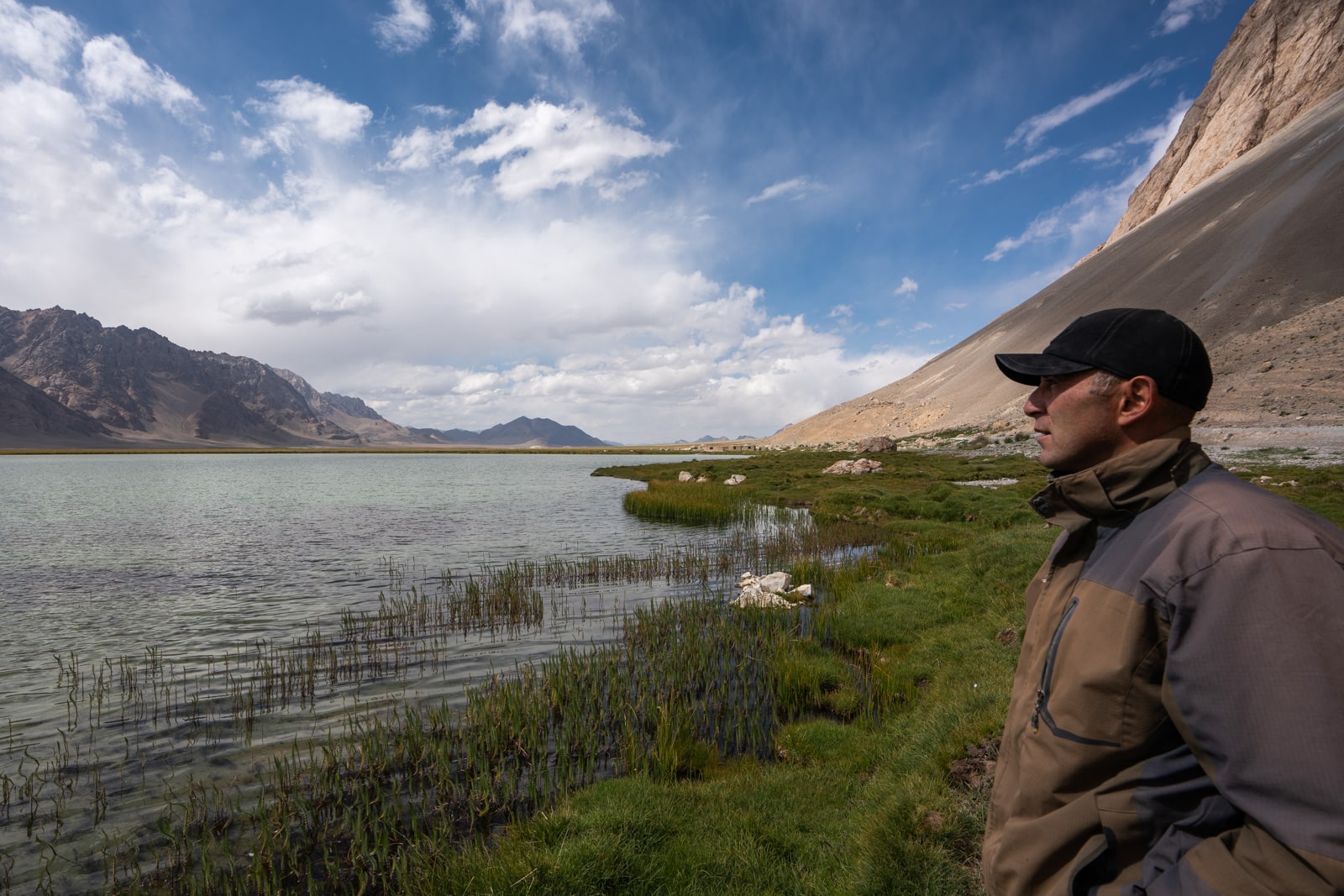
The creepy son at Dragon Lake
Drakon Ozera (Dragon Lake) is a small, elongated lake a few kilometers north of Shaikmak along the road from Murghab. Look up to see a seeming gash in the cliffs overlooking the lake; it’s said to be the work of a dragon, who sometimes reaches out and pulls travelers into the lake. Don’t get eaten.

Down side: getting groped by creepy homestay son. Up side: I got to drive his motorbike. Worth it.
Travel tips for visiting Shaimak
- Be wary of altitude sickness. Sleeping at 3,600 meters for days can be dangerous. I know, I nearly died from it. Drink lots of water, take it easy, and bring altitude medicines like Diamox if you can.
- Megafon is the only telecom provider that works in Shaimak and the surrounding area. I had enough 2G to send photos and Google things, but that’s about it.
- Bring bug repellent. There are an absurd number of mosquitoes in the river area despite the cold.
- You can pay with US dollars for your homestay and jeep ride, like many other places in Tajikistan.
- Fruit and vegetables are a good gift to bring homestay hosts, as well as a good idea to bring along from Murghab or further afield.
- Download offline versions of Russian or Kyrgyz Google Translate. Not many people speak English in Shaimak, and it’ll be useful for communication.
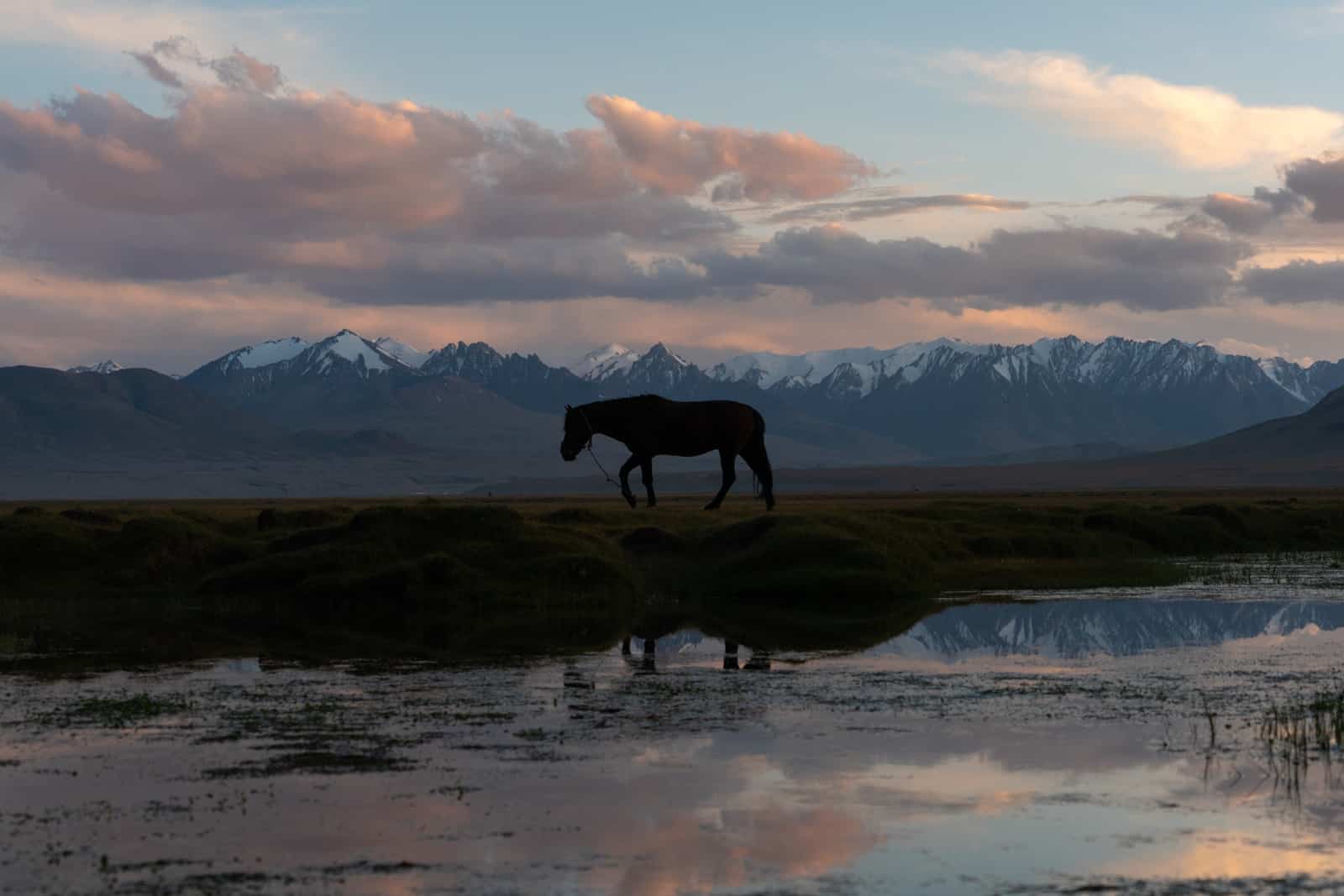
Goodnight, Shaimak
More posts from Tajikistan
- 70 surreal photos of Western Tajikistan
- Why I can’t wait to travel Tajikistan again
- Two-week overland Uzbekistan and Tajikistan itinerary
- 10 ways to prepare for travel in Tajikistan
- Peril in the Pamir – Part I
- Peril in the Pamir – Part II
Have you ever been to a place like Shaimak? Tell me about it in the comments!


